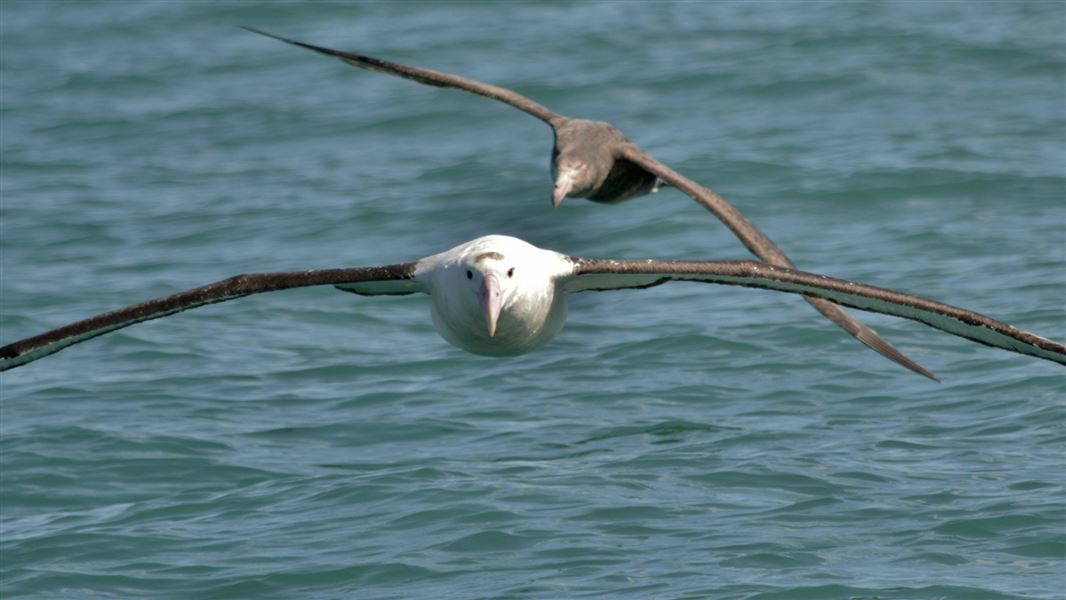
Introduction
A prioritisation framework is being developed for at-sea threats to New Zealand seabirds. These tools will drive future research to better understand, and manage, these threats. Clockwise from front: Southern royal albatross, Salvin's albatross, white-capped albatross, and a Cape petrel off Kaikoura.
Clockwise from front: Southern royal albatross, Salvin's albatross, white-capped albatross, and a Cape petrel off Kaikoura.
Image: Katherine Clements
New Zealand: seabird capital of the world
New Zealand is the global seabird capital of the world with 96 breeding seabird taxa and the highest global diversity of albatross, petrels, penguins and shags. Many of these species are critically endangered, with several in significant decline.
Seabirds are protected species and DOC has statutory responsibilities for their conservation. But, New Zealand also has international obligations to conserve seabirds in our waters. We are signatory to international conventions such as the Agreement for the Conservation of Albatrosses and Petrels (ACAP) and the Convention on Migratory Species (CMS).
Seabirds include many iconic species such as albatross and penguins. Such species have high societal and cultural values, with potential for far greater ecotourism. Seabirds also provide important ecosystem services, including transfer of nutrients from ocean to land. Our understanding of the biology, ecology, and threats is limited for many species. Existing data is dispersed amongst a range of sources.
Many seabirds forage widely, both within New Zealand waters and globally. They also tend to be long-lived and slow to reproduce and thus susceptible to any threats which may increase adult mortality. To ensure their conservation, it is vital not only to protect their breeding sites, but also to identify, understand and manage at-sea threats over their entire foraging range.
DOC's Conservation Services Programme currently manages fisheries seabird bycatch. Other at-sea threats to seabirds aren't as well managed, often due to the limited availability of relevant information.
Purpose of the seabird prioritisation framework
Read about why DOC's developing the seabird prioritisation framework and what it will produce.
Components of the seabird prioritisation framework
Read about the tools that make up the seabird prioritisation framework.